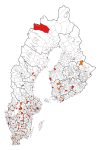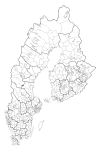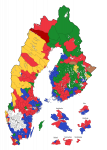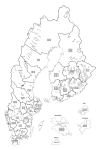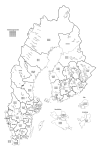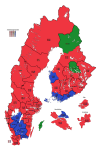1949-1954: Markus Öhman (Labour minority)
1949: Labour (207), National (125), Rural (57), Liberal (17), Communist (14), Finnish (5)
1954-1963: Johannes Grahn (Labour leading Labour-Rural composition)
1954: Labour (176), National (136), Rural (66), Communist (21), Liberal (15), Finnish (11)
1959: Labour (181), National (134), Rural (71), Liberal (21), Communist (12), Finnish (6)
1963-1967: Mikael Ahlström (National leading National-Rural-Liberal composition)
1963: Labour (154), National (142), Rural (64), Liberal (27), Communist (15), Finnish People's Party (15), Greens (5), Isänmaanliitto (3)
1967-1972: Gustaf Knutsson (Labour leading Labour-Rural-Green composition)
1967: Labour (145), National (136), Rural (44), Finnish People's Party (31), Isänmaanliitto (15), New Alliance (15), Liberal (14), Communist (14), Greens (11)
1972-: Gustaf Knutsson (Labour leading Labour-Rural-Green composition)
1972: Labour (151), National (104), Finnish People's Party (67), Rural (28), New Alliance (21), Greens (17), Communist (13), Liberal (12), Isänmaanliitto (12)
Subject to change. In particular, I think the Communists should be bigger and the Hats smaller - although ideally without moving too much support directly from one to the other.
